As the UFC seeks to make stars, some will be viewed as Heroes, and others as Heels. Here are five controversial figures who are likely to find stardom as the object of the fans’ ire, rather than their approval.
The first piece in this series focused on crucial components for stardom, the second piece concentrated on the mechanisms by which stars are made. This piece and the one that preceded it are focused on candidates for stardom — some will be viewed as Heroes, others as Heels.
Now the term “Heel” is a bit of a misnomer. It isn’t being used in the true pro wrestling sense, of guys putting on a character in order to be hated by fans. Nor is it based on the idea of promoters casting fighters in a certain light to manipulate fan perception. These fighters are who they are, and who they are galvanizes fans. They are not without their fans, but the fact that they generate controversy and stir things up ensures that they’ll always have their fair share of detractors…and perhaps rightfully so. However, being a polarizing figure doesn’t itself bar an athlete from becoming a star. In fact, it can often accelerate the process.
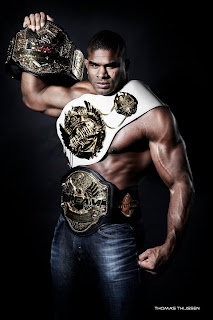 The former “Demolition Man” is a hulking imposing figure that was most recently seen sending Brock Lesnar into retirement. He is a former Strikeforce and DREAM World Champion, and an accomplished kickboxer to boot. He can unleash ultraviolence upon his opponents using his hands, feet, elbows and knees, and can choke them out using his formidable guillotine choke. Yet Overeem remains steeped in controversy, from the questions about his increase in size over the last few years, to his dealings with Golden Glory, his former management group, which have been alleged to be associated with organized crime, and other shady criminal figures.
The former “Demolition Man” is a hulking imposing figure that was most recently seen sending Brock Lesnar into retirement. He is a former Strikeforce and DREAM World Champion, and an accomplished kickboxer to boot. He can unleash ultraviolence upon his opponents using his hands, feet, elbows and knees, and can choke them out using his formidable guillotine choke. Yet Overeem remains steeped in controversy, from the questions about his increase in size over the last few years, to his dealings with Golden Glory, his former management group, which have been alleged to be associated with organized crime, and other shady criminal figures.
The fact that Overeem lives in The Netherlands, rather than in the States, creates an air of “eluding” deeper inquiries by flying overseas, away from the close scrutiny of stateside media and authorities. Overeem, for his part, doesn’t antagonize the media, but doesn’t come off as 100% sympathetic, nor 100% innocent. For fans who are used to baseball and other sports’ PED scandals, and the way that Barry Bonds, Roger Clemons, Floyd Landis, and others related to the questions from the press, Overeem’s mannerisms are evocative of an athlete with something to hide. Whether he ultimately tests positive or not, the questions about him will continue to swirl.
Furthermore, Overeem is in no way an underdog. He will likely be larger than any fighter he faces in the Octagon, and fights in such a way that he bullies his opponents. He has often been criticized for wilting under adversity, so it is unlikely that impressive displays of heart and fortitude will endear him to fans. These characteristics lend themselves to the fans taking to his seemingly overmatched foes, those who can withstand his onslaught, and battle through with fortitude to turn the tide. Even if it doesn’t happen for a while, whenever it does, the cheers will rain down on whoever can do it.
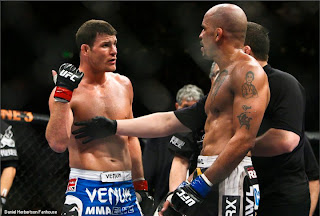 Michael Bisping is almost the anti-GSP. Georges St. Pierre sort of developed organically as a Canadian hero, while Bisping was a product of The Ultimate Fighter, and pushed hard by the UFC brass as the face of British MMA. Where GSP ran through a veritable who’s who at welterweight en route to a title shot against the dominant Matt Hughes, Bisping has been largely protected in terms of his opposition, and has faltered against the top tier, but is still on the cusp of a title shot. Whereas GSP is the consummate professional, and the face of class and respect for opponents, Bisping is prone to unprofessionalism, from tantrums to slurs to taunting to whining. That is not to say that Bisping is not without his own roguish charm, but the man can’t be held up as a role model, the standard of squeaky-clean sportsmanship that “the face of UK MMA” requires, at least if it wants to dispel notions about “cage fighters” in his home country.
Michael Bisping is almost the anti-GSP. Georges St. Pierre sort of developed organically as a Canadian hero, while Bisping was a product of The Ultimate Fighter, and pushed hard by the UFC brass as the face of British MMA. Where GSP ran through a veritable who’s who at welterweight en route to a title shot against the dominant Matt Hughes, Bisping has been largely protected in terms of his opposition, and has faltered against the top tier, but is still on the cusp of a title shot. Whereas GSP is the consummate professional, and the face of class and respect for opponents, Bisping is prone to unprofessionalism, from tantrums to slurs to taunting to whining. That is not to say that Bisping is not without his own roguish charm, but the man can’t be held up as a role model, the standard of squeaky-clean sportsmanship that “the face of UK MMA” requires, at least if it wants to dispel notions about “cage fighters” in his home country.
However, until that man is found, Bisping is what they’ve got, and he has actually garnered a major following in the US as one of the most hated fighters in the UFC. Fans know that booing him gets under his skin, and fighters know that a little bit of trash talk or other mockery can make him come unhinged. Press conferences where he attempts to be respectful are often one snide comment away from his more natural asshole side emerging, and things really getting interesting.
What makes Bisping truly compelling is that he is an asshole that doesn’t think he is an asshole, and on a certain level, doesn’t want to be an asshole. Yet he just is one, and it takes a Herculean effort on his part to hold it back, so much so, that when he just abandons that effort, it is almost relieving and comforting to see the true asshole that he is. Make no mistake about it, we still want him to get beat up, but every time he’s a smarmy dick, or a self-centered, insecure whiner who complains about the lack of respect from fans, it feels more natural, and helps to justify our disdain for him.
And that’s the paradox of Michael Bisping. If he weren’t so good, he wouldn’t be overrated. If he weren’t trying to be popular, he wouldn’t be so hated. The day Michael Bisping stops trying to be one of the faces of the UFC, he’ll probably stop being one of its most preeminent heels.
 More like anti-heroes than villains, the Diaz brothers are loved by fans who love a little antisocial chaos every now and then. Nick is paranoid, socially awkward, and refuses to conform. It doesn’t even seem like he loves to fight; rather, he seems to recognize that he’s good at it, and wants to prove that he can beat everyone up. Nick doesn’t want to “play the game” of press conferences, promotional appearances, photo shoots, and the like. He just wants to train and fight, and considers the rest a “beauty pageant.”
More like anti-heroes than villains, the Diaz brothers are loved by fans who love a little antisocial chaos every now and then. Nick is paranoid, socially awkward, and refuses to conform. It doesn’t even seem like he loves to fight; rather, he seems to recognize that he’s good at it, and wants to prove that he can beat everyone up. Nick doesn’t want to “play the game” of press conferences, promotional appearances, photo shoots, and the like. He just wants to train and fight, and considers the rest a “beauty pageant.”
Nate, however, can play the game a little. He endured a stint on The Ultimate Fighter. He shows up for press conferences and promotional appearances. He doesn’t fail drug tests, nor miss scheduled pre-fight drug screenings. However Nate is much more of an antagonist, and loves to initiate conflict, talk trash, get in fighters’ faces, and remind them that he “ain’t no bitch.” Nate was right there alongside his older brother during the infamous EliteXC and Strikeforce post-fight brawls, and seemed to relish it. No UFC fighter exemplifies the word “punk” more than Nathan Diaz.
But despite these personality failings, both are world-class fighters who are tremendously skilled, and fight in a manner that is both crowd-pleasing and entertaining. In fact, the fighting style that tends to beat them, the grinding, slowed down, wrestling style, based on creating stalemates and establishing top control, is loathed by most casual fans, and many hardcore ones, despite its effectiveness. Thus, even a disciplined fighter can find himself pulled into a brawl with Nick or Nate, because of the cheers that style of fighting may garner. And even fans who want to see the Diaz brothers lose find it hard to cheer for fights to be made less entertaining in order for that to happen. Outside of the cage, they are in many ways a menace to the sport, but in the cage, they are a big part of what fans love about the sport. That contradiction makes the Diaz brothers compelling figures, though definitely not role models.
4. Frank Mir
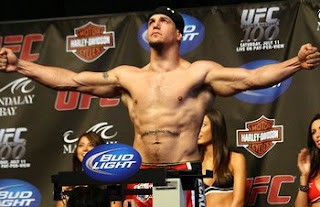 Frank Mir is comfortable in front of a microphone. Whether in the studio, the cage after a fight, at the dais at pre- and post-fight press conferences, or in the commentary booth, Mir has no problem saying exactly what’s on his mind, no matter who it rankles. He is often smug, dismissive, and self-congratulatory, particularly when it comes to his penchant for breaking bones with submission holds. He has joked about causing a death in the Octagon. He is clearly one of the best heavyweights in the world, and a gifted analyst as well, but if you put a microphone in front of him for any significant length of time, fans begin to hope that somebody shuts him up and humbles him.
Frank Mir is comfortable in front of a microphone. Whether in the studio, the cage after a fight, at the dais at pre- and post-fight press conferences, or in the commentary booth, Mir has no problem saying exactly what’s on his mind, no matter who it rankles. He is often smug, dismissive, and self-congratulatory, particularly when it comes to his penchant for breaking bones with submission holds. He has joked about causing a death in the Octagon. He is clearly one of the best heavyweights in the world, and a gifted analyst as well, but if you put a microphone in front of him for any significant length of time, fans begin to hope that somebody shuts him up and humbles him.
In the cage, Frank Mir is at his best when he can control the action en route to a somewhat boring one-sided decision, or surprise an opponent with a snap submission. Where he does not succeed is in a grueling, back-and-forth war, as Mir has shown a penchant for wilting under an opponent’s offense. He’s not a textbook front-runner, but he’s pretty close. If a Hail Mary submission is not forthcoming, Mir is most likely to go down in flames.
Admittedly, Mir’s relatively advanced age and mileage in the sport is a detriment to him finding a mainstream following at such a late stage of his career. However, after having been exposed to a fair amount of fans through his feud with Brock Lesnar, and because he possesses a truly gruesome highlight reel, as well as the gift of gab, Mir could be quickly positioned as a star over the twilight of his career, and provide an interesting foil for the top tier of the UFC’s heavyweight division. He may yet contend for the Heavyweight Championship again, and by the time he does, he could have a much higher profile than he has now.
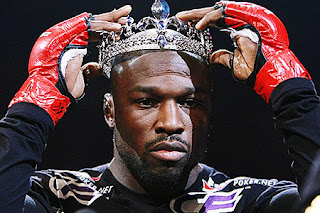 To be fair, Lawal is not currently fighting in the UFC, and his recent positive steroid test has undercut his ability to garner enough exposure in Strikeforce to arrive in the UFC a la Nick Diaz or Alistair Overeem, and challenge for the title right away. However, Lawal has two things working in his favor: (1) the relative dearth of light heavyweights who will be viewed as legitimate threats to Jon Jones in a year’s time, and (2) Lawal’s mouth, which could potentially make him the most polarizing figure in the sport.
To be fair, Lawal is not currently fighting in the UFC, and his recent positive steroid test has undercut his ability to garner enough exposure in Strikeforce to arrive in the UFC a la Nick Diaz or Alistair Overeem, and challenge for the title right away. However, Lawal has two things working in his favor: (1) the relative dearth of light heavyweights who will be viewed as legitimate threats to Jon Jones in a year’s time, and (2) Lawal’s mouth, which could potentially make him the most polarizing figure in the sport.
You see, King Mo doesn’t give a damn what you think about him. That is to say, he cares very much. Fans on Twitter and elsewhere on the internet criticize him, and Mo has no problem calling them out. He believes that he is unfairly scrutinized by white MMA fans because he is an outspoken Black fighter, and doesn’t try to sugar coat that perspective. He thinks that most fans are clueless, and believe whatever the hype machine tells them, while he is a student of the game, and smart enough to buck conventional wisdom. In short, Mo probably thinks he’s better than you.
Then again, Lawal doesn’t have a lot in common with you either. He is a world-class wrestler, with the work ethic to match, a natural athlete who has a gifted mind for combat sports, and a voracious appetite for tape study. He may speak with street slang, but he is highly-intelligent, and knows that to many, that’s a contradiction in terms. He knows the man that he is expected to be, the role that he is expected to play, and he is willing to play it, but only to a point. His classic quote is, “fuck the fans,” because, as he says, he’s in the sport to make money.
In general, sports fans don’t care for outspoken athletes who speak openly about making money taking precedence over “the love of the game” or other platitudes. In general, these fans want to see guys who smile and have fun “playing a kid’s game” more than men who scowl and frown, serious about the countless hours of training and preparation that goes into competing at a world-class level, and the slim margin for error between greatness and mediocrity, between accolades and acrimony. Mo Lawal smiles after he wins, celebrates his success, and tips his crown to his loyal fans, but always maintains the separation between himself and those who would judge him. He doesn’t fight for anyone but himself, and isn’t interested in changing who he is and how he fights to impress a fickle, disloyal fanbase.
In the cage, King Mo has been known to showboat and “clown” an overmatched opponent, as well as use his wrestling to grind down more competitive fights to a less aesthetically pleasing offensive pace. Those twin sins of “disrespect” and “lay and pray” consistently raise the ire of hardcore fans, but even more casual fans are less than enthralled by these tactics.
And yet, Lawal’s most recent scandal has the potential to mar his career, and ensure that he is looked upon with scorn and derison for years to come. He has competed at a world class level in wrestling, and has been subjected to the most stringent of drug tests. While other fighters may lack the sophistication to recognize the reality that professional athletes are ultimately responsible for everything they put in their bodies when they are subject to testing, Mo cannot claim ignorance. He is acutely aware of testing protocols of world-wide anti-doping commissions, and for fans who want PED users to be sanctioned and stigmatized in a real and lasting way, his protestations seem unpersuasive, and his positive test marks him as a more likely cheater than most.
Furthermore, given Lawal’s outspoken and unapologetic personality, especially as it concerns the fans, it is unlikely that he’ll be accepting responsibility (whether or not such a statement constitutes an admission of guilt), apologizing to fans, nor expressing contrition. Because of that defiant attitude, the label of “cheater” will remain with him, and the derision of a large segment of the fanbase will be justified in their eyes, while everything he does from now on, inside the cage or outside it, will be subject to that caveat. Whether or not that is unfair to Muhammed Lawal the competitor or the man is immaterial; “King Mo” will be firmly ensconced as a heel.
When sports fans take the time to hate a professional athlete or team, it’s usually because that athlete or team is really good. And often, the relish with which fans root against those athletes and teams proves to be a ratings and attendance driver. MMA is no exception, and the five men discussed above could drive ratings, attendance, and pay-per-view buys as they become bigger stars and more accomplished fighters. However, they’ll most likely do so while being cast as villains, antagonizing opponents and polarizing fans. They’ll be hated, but their talents in the cage will be respected.


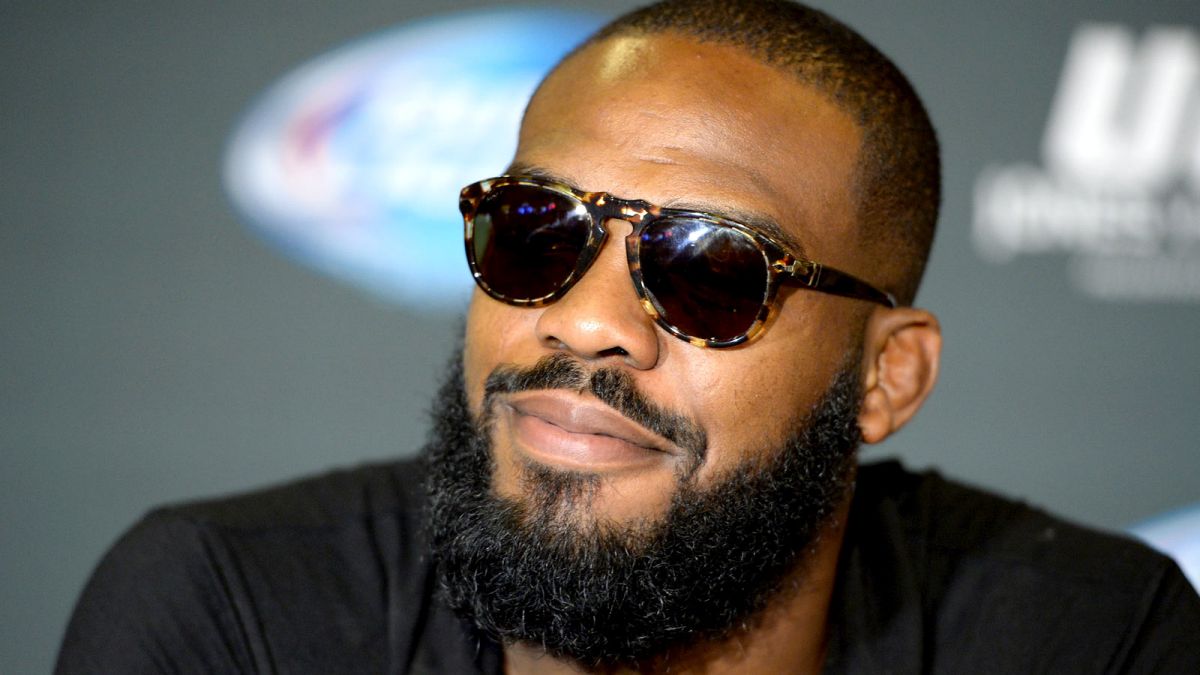
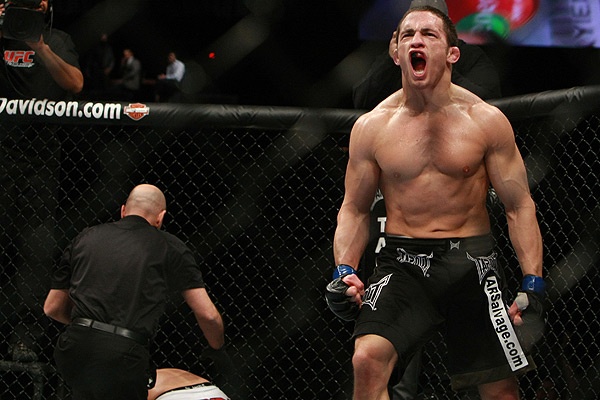
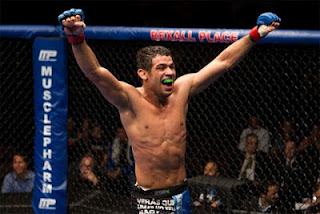
I like your choices, and I know they're not every possible heel, but I'm still surprised Chael Sonnen isn't among them.
For these purposes, I think Chael Sonnen is trying too hard. He is so over the top that MMA fans like him. Even many Brazilian fighters dig his schtick, and they should hate him.